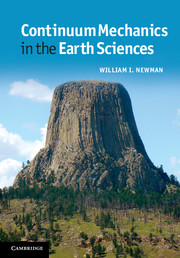Book contents
7 - Geophysical fluid dynamics
Published online by Cambridge University Press: 05 June 2012
Summary
In the previous chapter, we focused on the behavior of fluids in an inertially stationary environment. The Earth, as well as other planets and stars, on the other hand, rotate at a relatively constant rate thereby introducing a time scale and a length scale, namely the length of day and the Earth's radius, respectively, into the problem. Moreover, rotation introduces non-inertial forces, as we saw in section 1.6, that interact with other forces that are present, particularly gravity. This is further complicated by issues ranging from heat flow, variations in density, the role of viscosity, and the presence of topographically complex boundaries. Pedlosky (1979) provides an exhaustive survey of the field of geophysical fluid dynamics (GFD). Many arenas of investigation have emerged in response to these theoretical advances. Atmospheric and oceanographic flow, owing to their practicality, have preserved a prominent place in contemporary science. Houghton (2002) focuses on the physics of atmospheres while Holton (2004) presents a more meteorologically-based perspective. Marshall and Plumb (2008) explore the combined roles of atmosphere and ocean and their interaction, exploring also their long-term contributions to climate dynamics. Gill (1982) focuses on the atmosphere–ocean dynamics. Given that Earth's hydrosphere has almost three orders of magnitude more mass than its atmosphere, these interaction effects can be profound. Ghil and Childress (1987) investigate a set of topics emerging from atmospheric dynamics, dynamo theory, and climate dynamics.
- Type
- Chapter
- Information
- Continuum Mechanics in the Earth Sciences , pp. 134 - 146Publisher: Cambridge University PressPrint publication year: 2012

